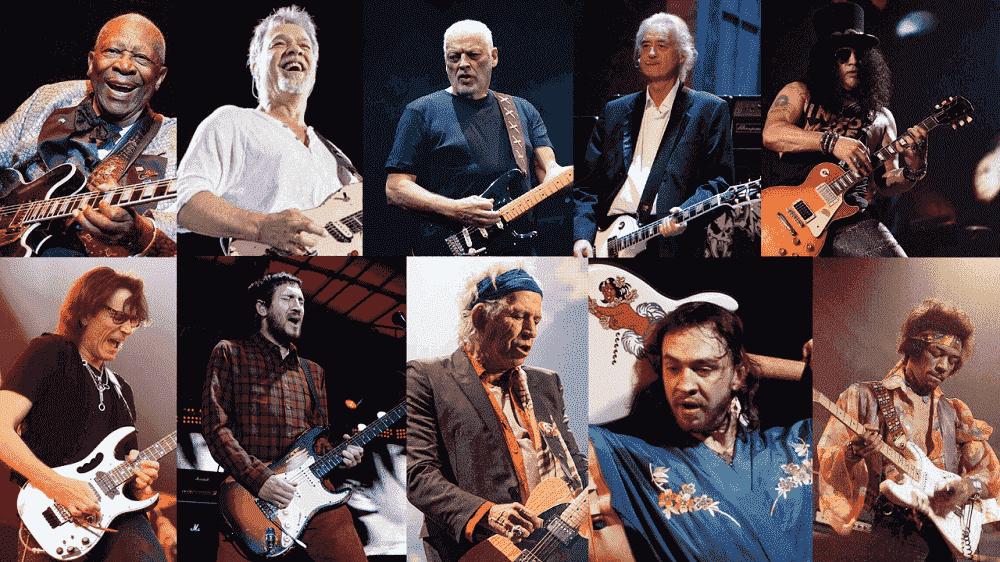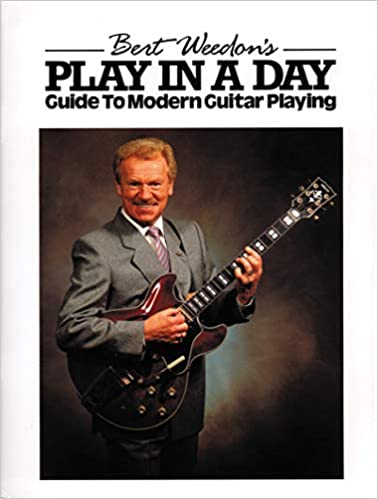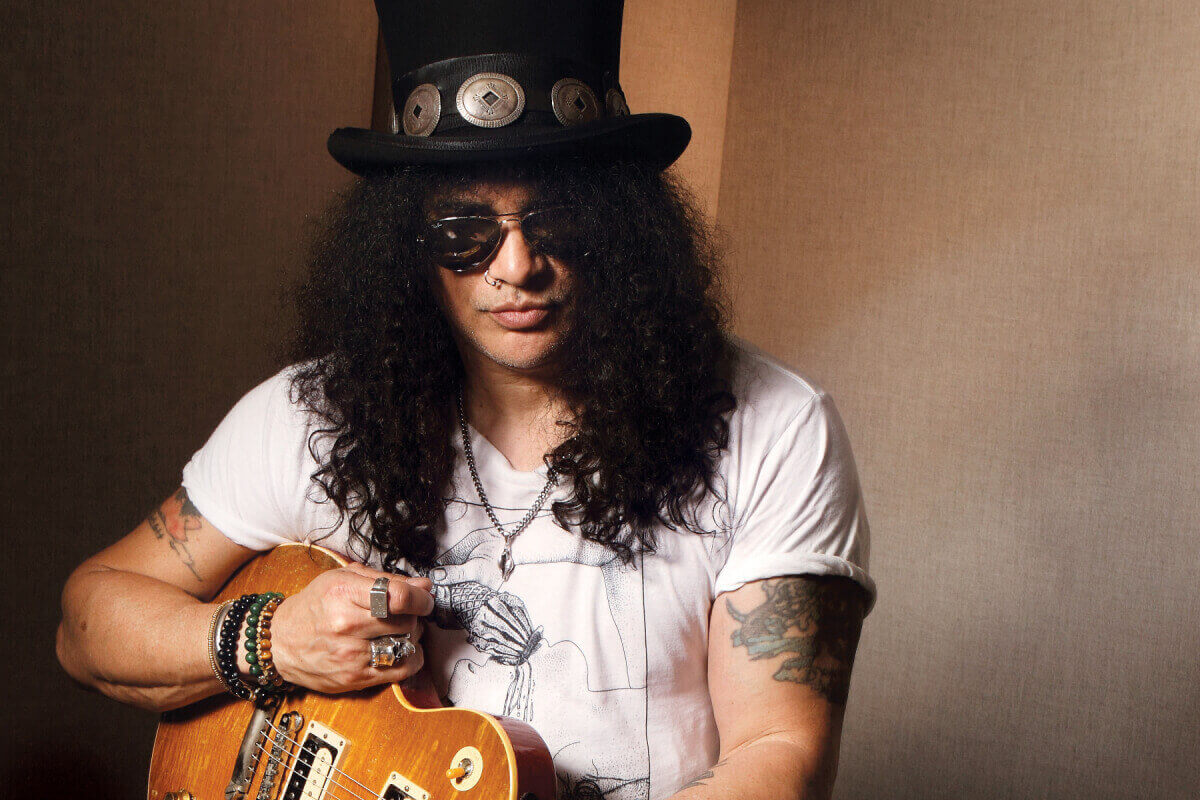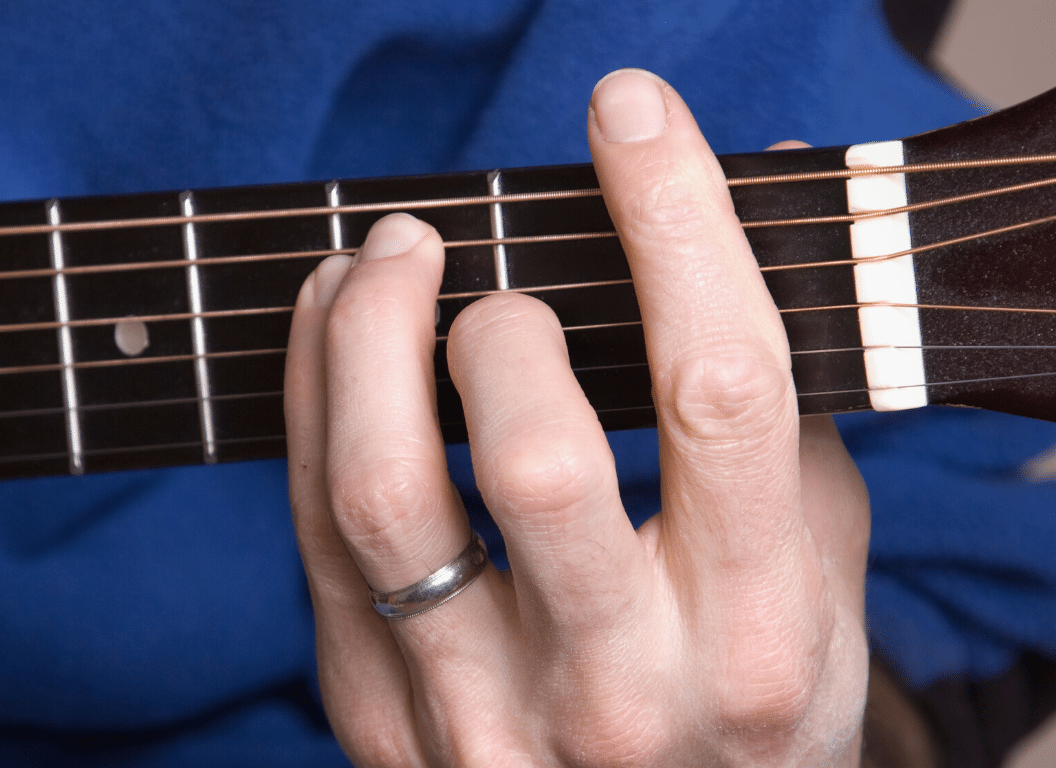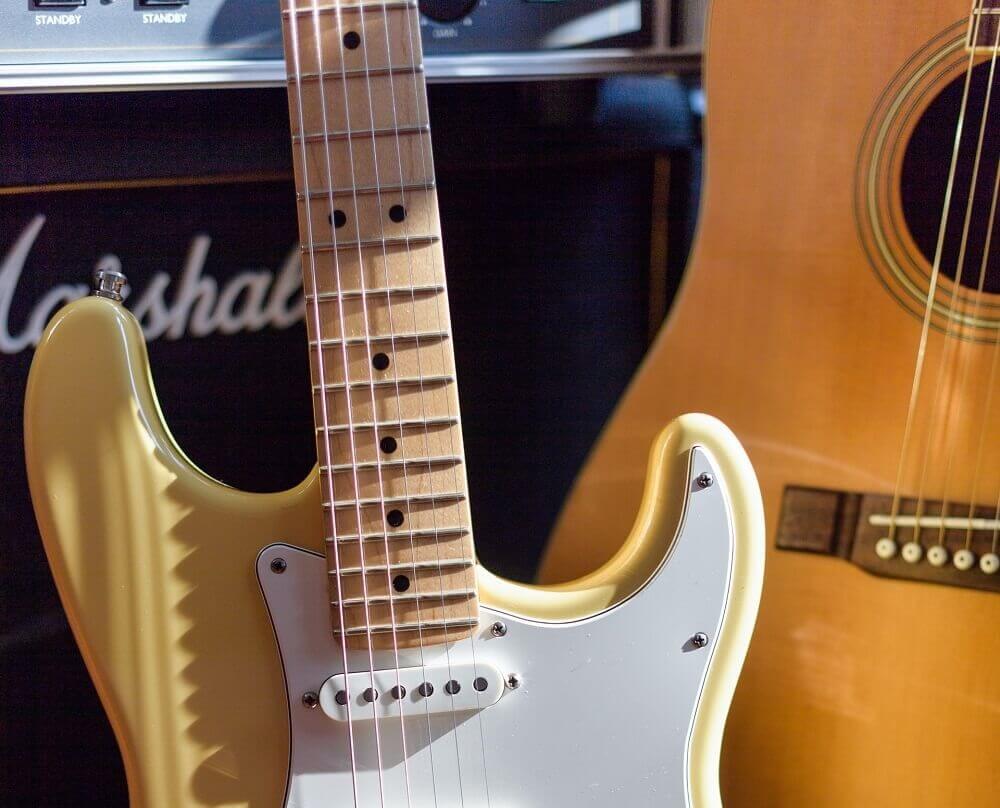Have you ever wondered how much do professional guitar players practice?
Even though a lot of the greatest guitarists that have ever existed already passed away, how did they get to such a level?
If you’ve asked yourself any of these questions before, then in this post, I’ll make sure to answer them while at the same time, give you some tips on having effective and productive practice.
We’re going to talk about whether you should spend 2 hours, 4 hours or even 8 hours a day, and what the advantages and disadvantages of doing so are.
Let’s get started!
Table of Contents
How Much Do Professional Guitar Players Practice?
The quick answer is that almost all professional guitar players have practiced for at least 2 to 6 hours every day at some point in their career. Many of them have gotten so far as to practice for entire days. On the other hand, a big number of those guitar players have always been in bands or played with other musicians, which is very likely to have influenced this behavior, since it was all they would do when they were younger.
Now, there are many other factors that you must consider before you go ahead and start practicing all day.
While it might seem to contradict at first, practicing a lot is not always good for you, especially with beginners.
Learning to play the guitar is just like working out at a gym, you must give your muscles and body time to rest and recover.
In the next sections of this post, I will be showing you examples of guitarists and what their practice schedule looks or looked like.
Aside from that, we will also take a look at the different steps a beginner should take in comparison to a professional and answer a few frequently asked questions that you might have.
Examples of professional guitar players and their practice schedule
1- Jimi Hendrix
Hendrix is considered a great guitar player because he essentially reinvented how the guitar was played.
The way that he played influenced just about every rock, blues, and jazz guitarist that came after him.
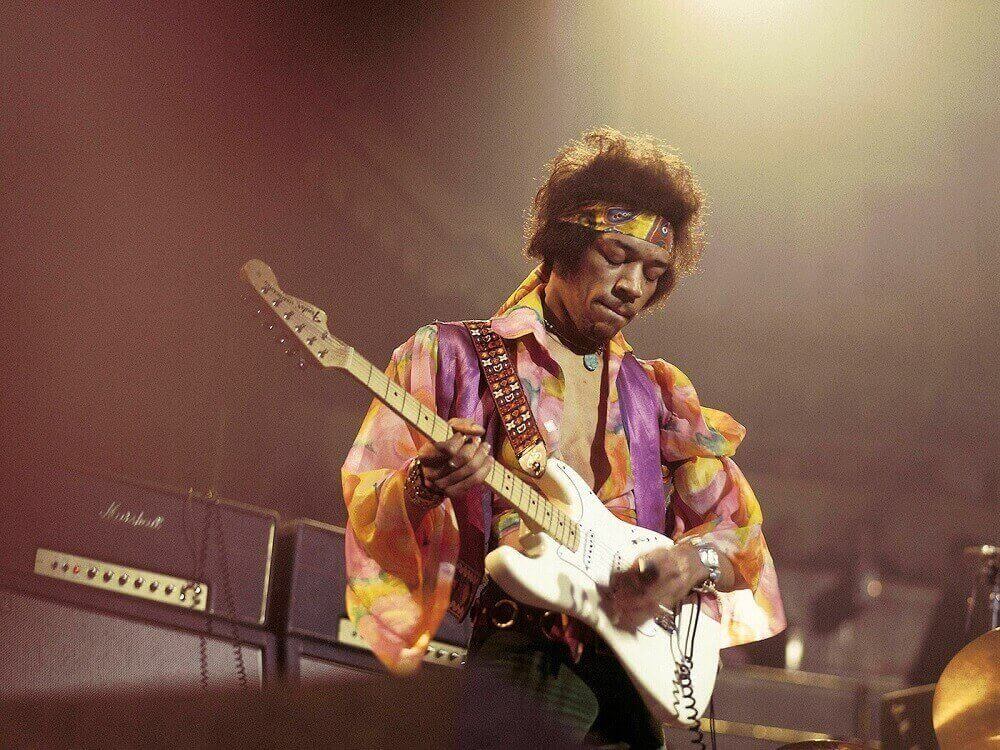
Image Source: David Redfern
It’s known that in 1957 while working with his father and amongst the garbage that they were removing from an older woman’s home as a side-job, he found a ukelele that only had one string.
That’s how he started to get involved with music and attempted to learn songs by ear.
One year later when he was 15, Hendrix acquired his first acoustic guitar, for $5.
At this age, he played for hours daily, watching others and learning from more experienced guitarists.
Listening to blues artists such as B.B. King, Howlin’ Wolf, Muddy Waters, and Robert Johnson was really his main way of inspiration.
Jimi never formally studied music theory, but he learned the ins and outs of playing guitar.
He was known to go to late-night jams and play until the morning after he already gave a live concert, and also played as he walked around his apartment.
2- Slash
Slash has said in many interviews that he really doesn’t count how many hours he practices playing guitar for.
Whenever he’s on the road, he plays so much, that it sometimes totals to about 20 hours a day.
You have to understand though, that such a number also includes his live shows and concerts.
I’m sure he doesn’t just sit down at home for 20 hours doing guitar exercises and practicing scales.
Even though there are points in any guitarist’s life that doing so turns into a habit, this is rather a very inefficient way of learning any skill.

Image Source: Kevin Mazur
A little bit about his story is that he dropped out in 9th grade, and always had his guitar on him.
He also spent a lot of time listening to blues and speed metal contemporary of the time.
In his early childhood days, he was only equipped with a one-string flamenco guitar given to him by his grandmother and began taking classes with Robert Wolin, a teacher at Fairfax Music School.
As a fun fact, he first thought of being a bass guitarist, but during his first lesson, Slash decided to switch from bass to guitar after hearing Wolin (his music instruction) play “Brown Sugar” by the Rolling Stones.
Slash has stated: “When I heard him do that, I said: ‘That’s what I want to do’.”
3- John Frusciante
Frusciante has gone on record saying that in his early days he practiced 12-15 hours a day every day.
At age nine, he was obsessed with the Germs (an American punk rock band from Los Angeles, California), wearing out several copies of their record.

Image Source: Martin Philbey / Redferns
By the time he turned ten, he already knew how to play most of their songs by teaching himself.
John started studying and analyzing guitar players such as Jimmy Page, David Gilmour, and Jimi Hendrix at the age of 11.
He dropped out of high school at age 16 with the permission of his parents and upon completion of a proficiency test.
After that, Frusciante began attending the Guitar Institute of Technology to take classes but turned out that he would only go to punch in without actually attending and left shortly thereafter
4- Jimmy Page
Page was inspired by Elvis Presley and a lot of the music that was popular in the 50s.
He spent a good portion of his youth years playing in skiffle bands, in fact, his first TV appearance was because of being in a skiffle quartet when he was 13.
To a great extent, he was self-taught, but he also took quick lessons from someone that played guitar in his school whom he approached one day.
He would learn a few chords and would play them until he learned something else.
In an interview with the Academy of Achievement, he said:
“I learned from records when I was a teenager. And so, I wasn’t necessarily copying them, but I was learning almost like an academic. I was sort of recreating what they did.”
In this same interview video, right around minute 28:52, Jimmy also says:
“I didn’t take lessons. I learned from a book called “Play in a Day.” Actually, I learned from “Play in a Day.” and many years later I became a studio musician, and the way that the notation was in “Play in a Day.” was exactly the way they wrote out chord charts. So yeah, it was very useful.
You should definitely check it out: Bert Weedon’s Play in a Day: Guide to Modern Guitar Playing
This exact book that he is mentioning is the same one that many other guitar legends have learned from.
This includes Eric Clapton, Paul McCartney, George Harrison, John Lennon, Brian May, Pete Townshend, and many others.
5- Eddie Van Halen
In an interview with GuitarWorld, he mentioned how he didn’t call it “practice” anymore.
He used to love to lock himself in his room and play the guitar by himself.
“After two or three hours, I start getting into this total meditation. It’s a feeling few people experience, and that’s usually when I come up with weird stuff. It just flows. I can’t force myself. I don’t sit down and say I’ve got to practice.”
In this interview with Billboard, he mentions that after being trained to be a classical pianist, one of the things that really made him switch his music inspirations was hearing The Dave Clark Five, especially the drums.
Consequently, when his brother Alex began playing the guitar, Eddie bought a drum kit for himself; his brother started playing that same drum kit as well, and got better than him.
After he heard Alex’s performance on drums, he gave Alex the drums and began learning how to play the electric guitar.
According to Eddie, as a teen, he would often practice while walking around at home with his guitar strapped on or sitting in his room for hours with the door locked.
6- Keith Richards
In one interview with Guitar.com, he mentions:
“When I started, all I wanted to do was play like Chuck [Berry]. I thought if I could do that, I’d be the happiest man in the world. Then, when I found out I could do it, I thought, well maybe there is another aim in life.”
This goes to say that as guitarists, it’s always good to get inspired from other guitar players, and then use that as a stepping stone to other goals.
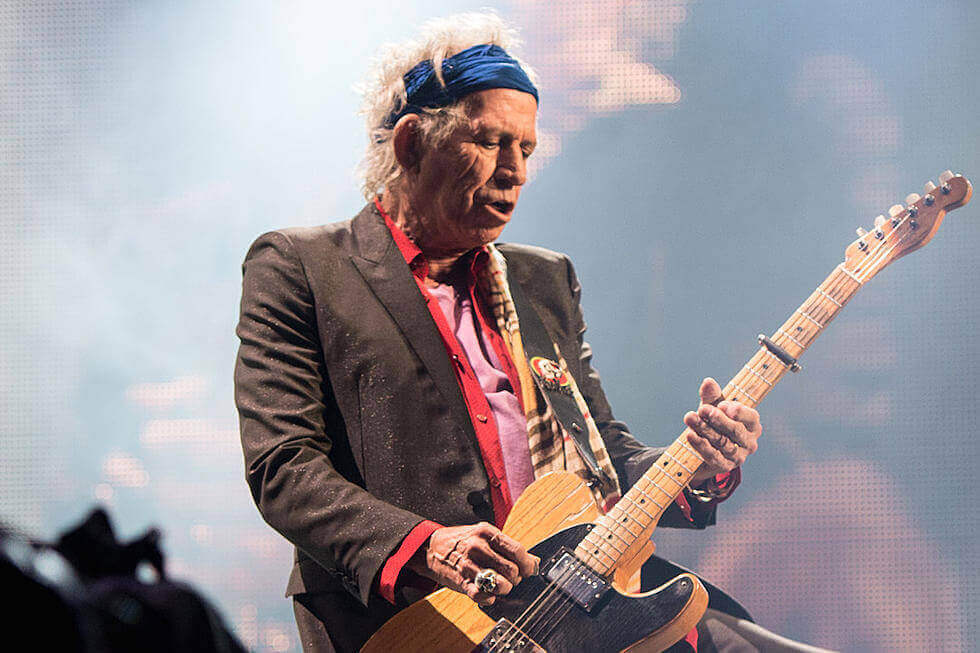
Once you practice something up to the point where you can get it right, then it’s always good to find something else to challenge yourself.
“If you don’t play with other people, you can get trapped in your own cage,” he said in 2013.
He claims to have only slept, on average, two nights per week during the Rolling Stones’ prime, according to his 2010 autobiography.
“This means that I have been conscious for at least three lifetimes,” he calculated and wrote.
Keith Richards claims to have written the guitar riff for, “Satisfaction,” in his sleep, so with that being said, don’t go ahead and stop sleeping just to play guitar.
Some of his inspirations include recordings by Louis Armstrong, Billie Holiday, Duke Ellington, and many others.
7- Stevie Ray Vaughan
Stevie Ray took a music theory course in high school but failed to reach the required grade to pass it.
Aside from doing that, and learning small things about guitars here and there, he was mostly self-taught.
According to Wikipedia:
In the early 1960s, Vaughan’s admiration for his brother Jimmie resulted in him trying different instruments such as the drums and saxophone.
It wasn’t until he turned 17, that he received his first guitar, a toy from Sears with a Western motif.
After that, he began to learn by ear, following along to songs by the Nightcaps, particularly “Wine, Wine, Wine” and “Thunderbird”.
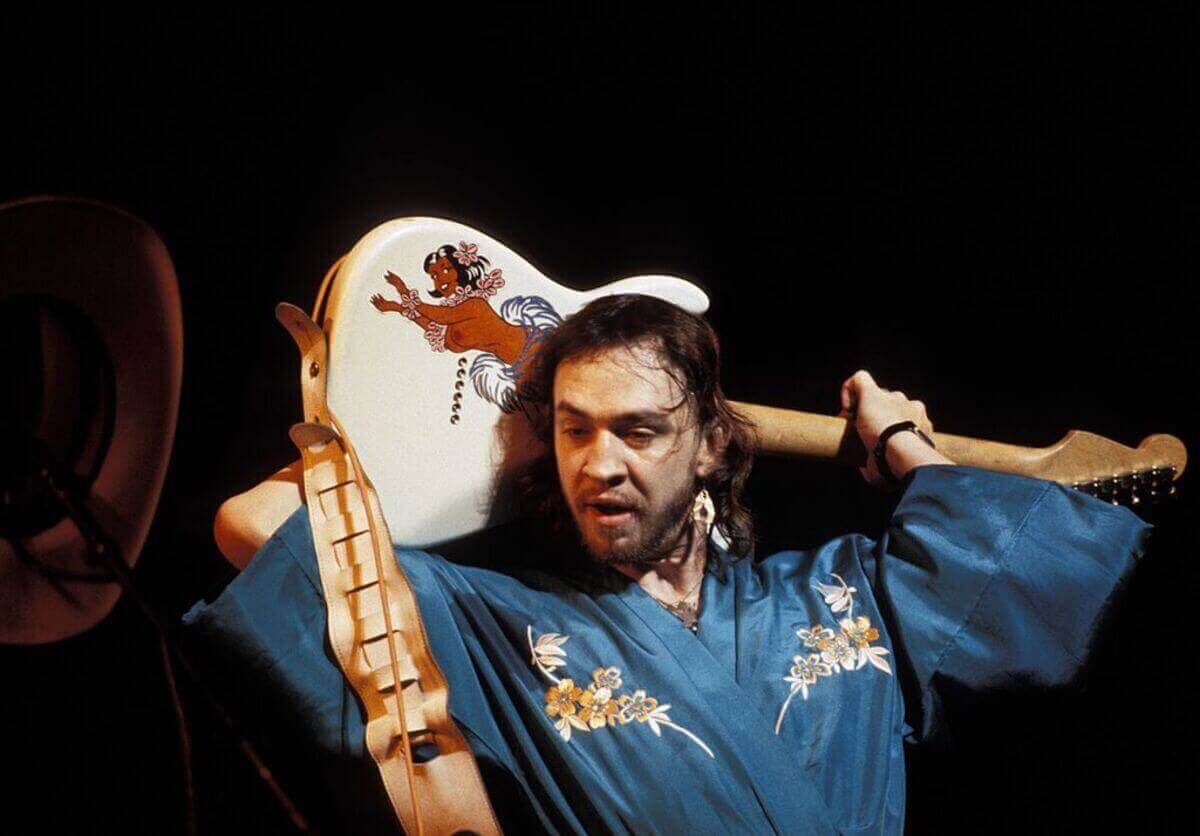
Just like many of the other great guitar players that we already mentioned, he also listened to blues musicians such as Otis Rush, and Muddy Waters, and rock guitarists such as Jimi Hendrix and Lonnie Mack.
In 1963, he acquired his first electric guitar, a Gibson ES-125T, as a hand-me-down from his brother Jimmie.
8- David Gilmour
David Gilmour’s guitar passion and interest were stirred by Elvis Presley’s “Heartbreak Hotel”, and later “Bye Bye Love” by the Everly Brothers.
When he turned 11, he attended Perse School on Hills Road, Cambridge, which he did not enjoy at all.
It’s been said multiple times how at a young age, he borrowed a guitar from a neighbor, but never gave it back.
Gilmour started teaching himself to play using a book and instruction record by Pete Seeger soon afterward.
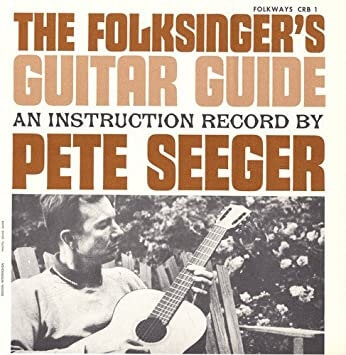
In this interview with BBC, he also says this:
My only actual instruction was with Pete Seeger’s Instruction record.
The first lesson he ever received in that instruction record was how to tune his guitar, followed by learning to play a D chord and singing a 1-chord song right after.
We can safely assume that after that, slowly and steady was exactly how we learned to sing and play the guitar.
9- Steve Vai
In a GuitarWorld masterclass taught by Steve Vai, he said:
My usual practice routine when I was young was nine hours a day. I’d start at 3 P.M. when I got home from school, and I’d go until midnight. The reason it was nine hours is that it was divided into three three-hour segments, with specific things I wanted to accomplish in each hour.
Just that statement alone makes him, in my opinion, one of the most organized guitarists that I’ve seen.
Dividing his practices into segments in which he would train for a specific guitar skill (or just something he wanted to accomplish), just like an athlete, is one of the most effective ways of learning to play guitar.

If you’ve read our guitar blog before, then you know that we always advocate for organized rehearsals and practices.
In other words, if you’re a beginner, then it just makes sense for you to go step by step, instead of trying to do and learn everything in just one day.
“The amount of time you put into playing will be directly reflected in your command of the instrument.”
– Steve Vai
He was self-taught for his first year as a guitar player and then he went on to take lessons from Joe Satriani.
That was in 1973, which happened at the same time that we would play in local bands (The Ohio Express, Circus, and Rayge) throughout his high school years.
Some of his greatest influences include artists such as Jimmy Page, Brian May, Ritchie Blackmore, Jeff Beck, and Jimi Hendrix.
In 1978, to further pursue his interest in music composition and theory, Vai attended Berklee College of Music in Boston, Massachusetts.
10- B.B. King
B.B.King started his musical passion by singing in the gospel choir at Elkhorn Baptist Church in Kilmichael.
It wasn’t until the local minister performed with a Sears Roebuck Silvertone guitar during services, that he would learn his first three chords, taught by that same local minister.
According to Equipboard.com:
He reportedly started at age four, and though he recounts taking a few lessons in his youth he was largely self-taught.
With that being said, the majority of these great guitarists mostly learned from playing in actual bands rather than sitting in their rooms by themselves.
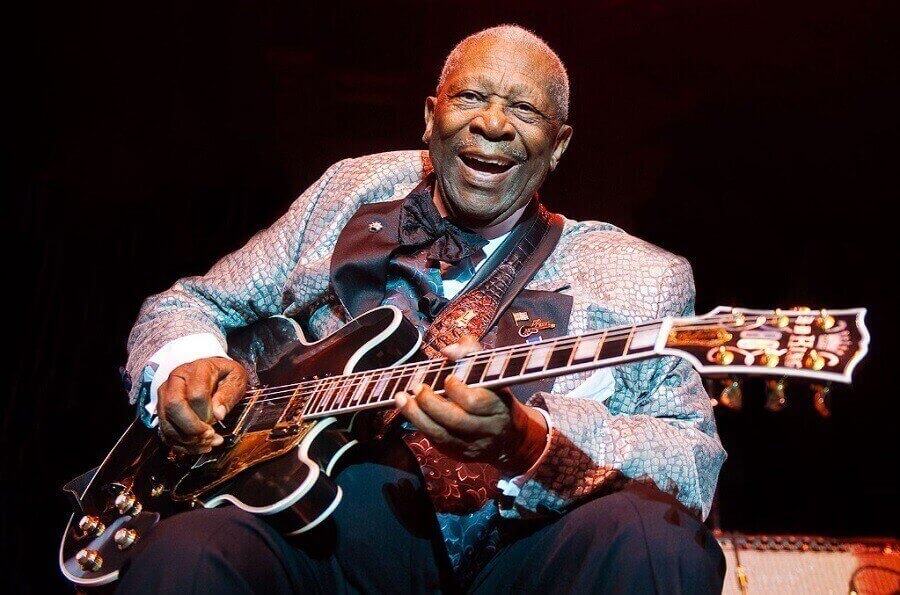
Image Source: Neil Lupin/Redferns
That seems to be a problem nowadays since rarely do you find people interested in starting a band unless you’re in a very musically inclined city.
And even then, most people nowadays prefer to opt for either a solo career or a genre that doesn’t necessarily require you to form a band.
Is practicing one hour every day enough?
Practicing one hour every day is more than enough for the big majority of guitarists out there.
If you are just a beginner or barely even starting to learn to play guitar, then I would say one hour every day should be your absolute maximum for now.
The reason why is very simple: When we start to learn any skill, specifically an instrument like a guitar, our muscles need to adapt and develop what’s call muscle memory.
Muscle memory according to Oxford Languages is:
The ability to reproduce a particular movement without conscious thought, acquired as a result of frequent repetition of that movement.
To put it another way, when you’re first starting to play the guitar, your hand muscles and brain will basically say: “What the heck am I even doing?”
That’s why things such as repetition and continuous practice help you develop that “memory.”
After some time, this will just indicate to your brain that what you’re doing is a normal thing and that you’ve done it before.
Hence you’ll be able to effortlessly and subconsciously execute those repeated activities, eg. playing the guitar.
For more advanced players with more techniques to practice and songs to learn, then it makes sense to extent from 1 hour, to however much you feel comfortable with.
Can you practice guitar too much?
Yes, I would say so!
That’s why terms such as ‘musical burnout’ (or sometimes called ‘guitar burnout’) exist.
Both of them essentially mean that would stop playing music (in this case, playing guitar) because of how much enjoyment and motivation you’ve lost.
In more professional terms, according to HelpGuide.org:
Burnout is a state of emotional, physical, and mental exhaustion caused by excessive and prolonged stress. It occurs when you feel overwhelmed, emotionally drained, and unable to meet constant demands.
Things that are known to lead to burnout in guitar players include:
- Over practicing.
- Not seeing any progress.
- Muscle pain or injury.
- Unclear learning goals.
- Unsatisfied with your own gear.
Make sure that you’re always taking care of your body and mental health because if you don’t do so, you will likely end up in a repeated circle of playing and then ignoring your guitar for a while.
We’ve seen this happen to more people than it honestly should have.
Conclusion
There is never a one size fits all answer to these types of questions.
We all have different paths and stories!
As we learned from all these 10 great musicians, once you get to play music professionally, the act of just playing in front of an audience will be in itself your practice.
Even though this is not always the case, as we saw with Eddie Van Halen, and Steve Vai, is most likely what will happen to most guitar players once they turn into professionals.
And in case you’re asking yourself this question because you want to do exactly what they did and replicate what it takes to make it out there as a guitarist, then this quote by Steve Vai could serve you some guidance:
“The last thing you want to do is to feel like you have to put in more time than you are comfortable with because you’d be pushing yourself to do something uncomfortable.”
With that being said, the best thing for you to do is to set small goals and go after them one by one, this will ensure that will both feel proud and productive.

An avid storyteller and music lover that devotes all his free time to mastering the art of playing guitar. I’ve played acoustic for 6 years, and recently started playing electric guitars. Currently playing an Epiphone SG Special!

